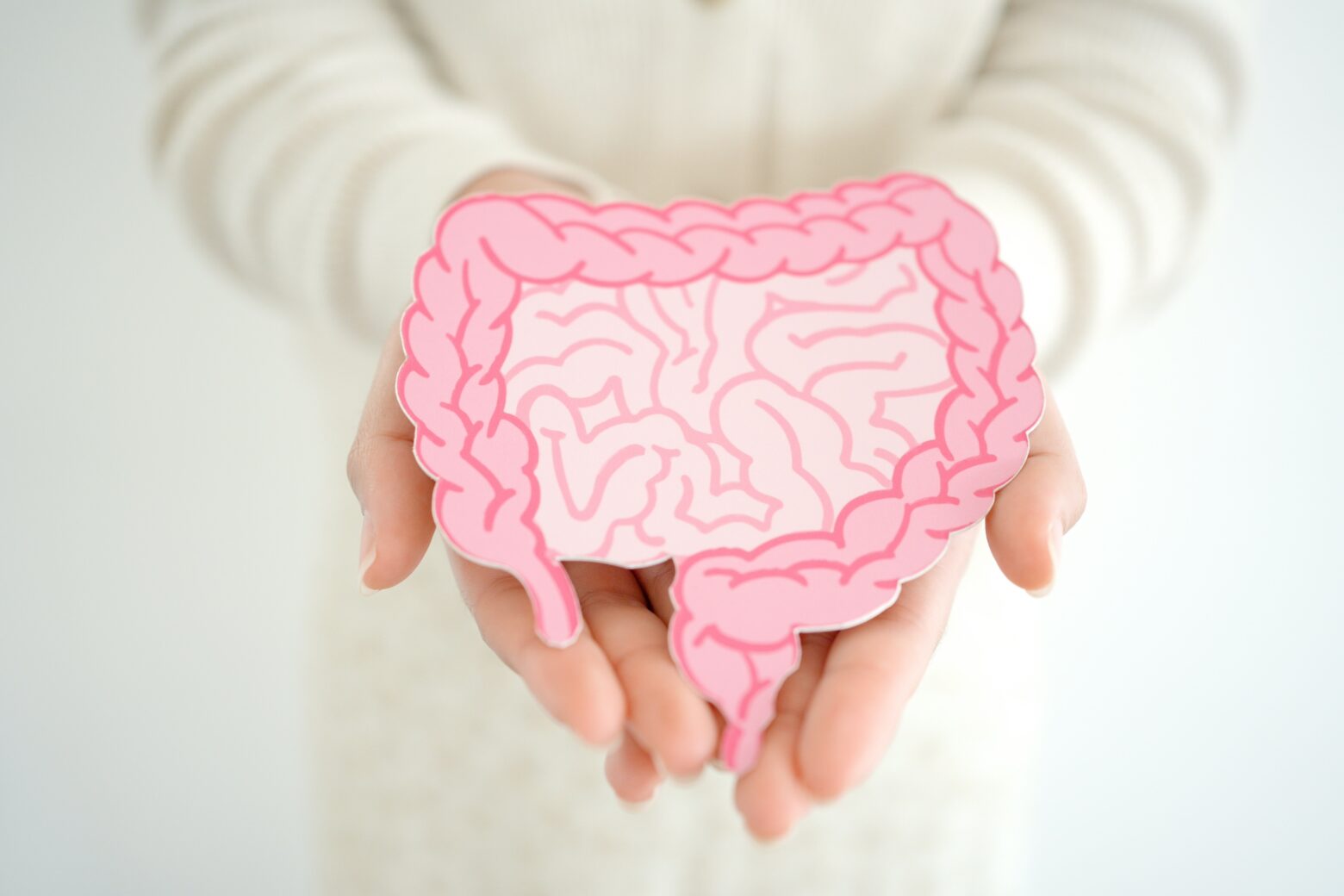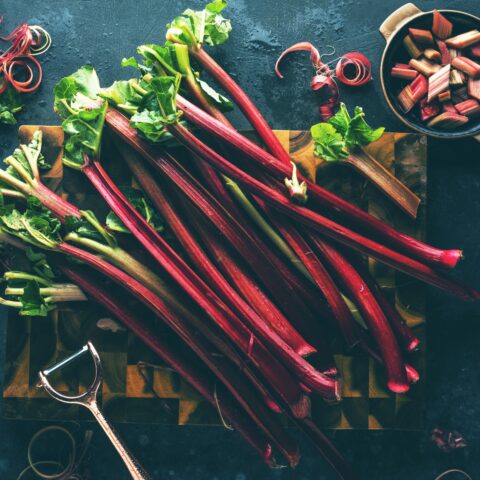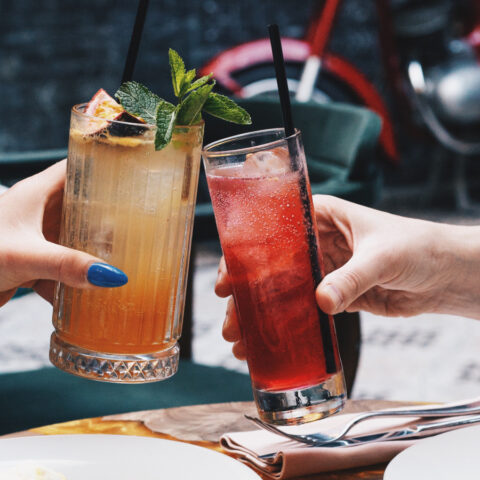The Human Gut: How It Works, Its Importance to Health, and Ways to Keep It Healthy

If you’ve strayed from The Paleo Diet lately, or have yet to take it up, there’s a good chance your gut has given you some not-so-subtle signs that what you’ve eaten is less than ideal.
Donuts and a Frappuccino in the morning as you rush to work? That grilled-cheese sandwich and Coke for lunch? Obviously, these items have no place in a well-balanced diet. And they are nowhere near what you should eat if you’re hoping to practice Paleolithic principles.
The result of eating such foods is often felt in the gut: intestinal gas, indigestion, bloating, diarrhea, and constipation. These and other slaps in the face are your body’s way of telling you to make changes.
In the most general sense, the human gut—otherwise known as the gastrointestinal (GI) system or GI tract—is the processing system for everything liquid and solid you consume. It comprises amazingly complex mechanisms and organs. Yet, it fits very nicely inside our bodies.
The GI tract starts at our mouth and ends at the anus. This conveyor belt for food and drink includes several distinct major sections, including the mouth, esophagus, stomach, small intestine, and large intestine. Most often it is our stomach and intestines that are referred to as the gut.
Let’s take a closer look at how this human super system functions, why it is so important to overall health, and ways to keep it functioning properly.
How the Gut Works
It is interesting to note that food and liquids we ingest do not truly enter our bodies until they pass through the lining of the GI tract at some point along its length. For example, the bite of turkey you just ate does not truly enter your body until the digested turkey and its amino acids pass across the lining of the small intestine and into your bloodstream.
Indeed, much of what you eat, such as indigestible plant material and other fiber or bulk, never “enters” our bodies at all and is disposed of as fecal waste. In a real sense, the human body is a tube with a hollow center—it only allows specific necessities to pass through the intestinal lining and truly pass to the inside.
Digestion starts in the mouth. We chew our food, physically breaking it down into pieces at least small enough to be swallowed. Physical crushing also begins the release of nutrients from the cells of our food, which is particularly important if the food has not been cooked—for example, a raw carrot.
Saliva is added as we chew, which contains numerous digestive enzymes and other aids that help break down the three macronutrients we eat—proteins, fats, and carbohydrates.
Food next enters the stomach—an amazing organ that generates, and is generally impervious to, a strong brew of hydrochloric acid, more enzymes, bile to emulsify fats, and other important digestive compounds and factors.
The stomach also continues to disrupt and break down food with physical movements. The strong acid and enzymes also perform the very important function of destroying most bacteria, viruses, fungi, and parasites that might have entered the stomach along with our food. Some microorganisms resistant to a high-acid and enzyme-rich environment can make it intact beyond the stomach.
When ready, the stomach empties its contents to the small intestine. This 18- to 20-foot-long, highly vascularized tube is where most of our food absorption takes place. By now, proteins have been broken down into amino acids. Fats have been reduced to fatty acids and triglycerides. Carbohydrates are now simple and complex sugars or remain relatively unscathed—for example plant material such as cellulose.
A wave-like physical motion called peristalsis, produced by smooth muscle surrounding the small intestine, moves materials down its length. But carbohydrate digestion continues as well, courtesy of beneficial gut bacteria.
These gut bacteria contain biochemical machinery that we do not. They can digest and process more than is possible without them. They are also capable of synthesizing certain vitamins and other micronutrients. So, we harbor them in a beneficial, mutualistic relationship. We provide their food; they provide some of our food.
Materials that have not been absorbed in the small intestine—less-digestible fiber materials and much of the fluid we drink—move on to the vascularized, six-foot-long large intestine.
Once again, beneficial bacteria predominate, and continue to make a last-ditch effort to squeeze every bit of nutrition from what we consume. Enough water moves from the large intestine into the bloodstream to turn what remains into a semi-solid mass with a moisture content of about 75 percent. When ready, the large intestine uses peristalsis to empty itself through the anus.
The Gut’s Role in Human Health
Only recently have scientists discovered the intricate relationship of the gut to the rest of the body—in particular, the immune system. Obviously, the gut is responsible for the absorption of the necessities of nutrients and water. And as described above, the GI tract figuratively takes a chemical and biochemical blowtorch to any pathogen that enters it through the nose or mouth.
Recent and established research on several fronts confirms the role of the GI tract in keeping us healthy on multiple levels.2,3,4,5 Indeed, the gut harbors up to 80 percent of our immune capabilities.2
Previously thought to be a domain “outside” our bodies (as described above, the hollow tube within us), it is now very clear that the bacteria in our gut communicate with other organ systems throughout our bodies in ways we are only beginning to fully understand—health status, warning signals, just to name a few.4,5
Amazingly, even our temperament is profoundly influenced by the type of bacteria that predominate in our gut. For example, babies with a gut dominated by Bifidobacterium tend to have sunnier dispositions.5
Gut Bacteria and Microflora Are Everchanging
Each person has a unique gut microbiome—not surprising given the trillions of bacteria that comprise it—which is principally set by age 4. Your diet, where you live, your use of antibiotics and other drugs, and even the amount of time you spend outdoors can significantly affect the make-up of your gut bacteria.
Amazingly, your age can be accurately estimated within four years simply by looking at the microbes in your gut, thanks to computer-machine learning and artificial intelligence.5 In short, the gut declines in immune reaction to challenges as we get older.
Research also suggests “transplants” of bacteria from young individuals to older people might be a strategy for greater health in old age.5 For instance, in one study, it was shown that the immune systems of older mice responded positively when they received fecal transplants from much younger mice, with their immune response reverting to a more youthful status. The implication is that taking probiotic supplements could be an emerging strategy for an aging population. However, the jury is still out on that point.
Leaky Gut Syndrome and Inflammation
What would happen if the things that normally passed through the GI tract without fully entering the body suddenly were able to walk right in?
Leaky gut syndrome is a condition you want to avoid. In this disorder, the gut becomes more permeable to bacteria and harmful substances—harmful because they are not intended to be “inside” your body or flowing within your bloodstream.
Leaky gut opens the door for this to occur. These unwanted substances can cause immune reactions since they are viewed as invaders. This cascade of reactions is rarely positive; it can also lead to autoimmune responses in which your body essentially attacks itself. 6,7
Allergic reactions, multiple sclerosis, lupus, arthritis, and numerous other ailments can be attributed to this autoimmune response.6,7
When we consume inflammatory foods, and foods to which we are poorly adapted, leaky gut can result. Grains, legumes such as peanuts, beans, and peas, excess amounts of plant-based omega-6 oils, and other inflammatory triggers can lead to leaky gut.8,9
When this happens, gut bacteria and digestive fluids flood the bloodstream, causing havoc in the short-term and, potentially, in the long-term, if leaky gut persists over periods of months or years.
How to Keep Your Gut Healthy
What can you do to protect yourself and your gut? There are numerous ways to avoid health issues and promote overall good health and well-being:
- Eat a well-balanced Paleo Diet that avoids processed foods, grains, legumes, and dairy, and focuses on consuming natural animal protein, generous amounts of fruits and vegetables, and some nuts and seeds. In most cases, this will ensure you receive appropriates levels of proteins, fats, carbohydrates, vitamins and minerals, other micronutrients, and high-fiber prebiotics that feed your gut probiotic microbiome.
- Drink plenty of high-quality water throughout the day to keep yourself and your gut hydrated.
- Get plenty of exercise, including walks outdoors, cardiovascular workouts, and weight training that is consistent with your age and fitness level.
- Get plenty of high-quality sleep—at least 7.5 hours per day, with a break from your electronic devices and screens at least an hour or two before your head hits the pillow.
- Practice mood-enhancing, stress-relieving, and calming routines such as yoga, meditation, and music.
The more scientists know about this amazing super-system—the gut—and its roles, the more marvelous its interconnectedness to other organ systems becomes. The implications for our overall health and longevity are profound.
References
- Centers for Disease Control and Prevention. 2021. Obesity is a common, serious, and costly disease. https://www.cdc.gov/obesity/da…;
- Vighi, G. et al. 2008. Allergy and the gastrointestinal systems. Clinical and Experimental Immunology 153(Suppl 1): 3–6. doi: 10.1111/j.1365-2249.2008.03713.x
- Fields, H. 2015. The gut: where bacteria and immune system meet. Johns Hopkins Medicine.
- Wallis, C. 2020. Our tiny inner pharmacists. Scientific American 322(1):23. doi:10.1038/scientificamerican0120-23
- Henig, R.M. 2020. The microbiome menagerie. National Geographic 237(1):86-103.
- Mu, Q. et al. 2017. Leaky gut as a danger signal for autoimmune diseases. Frontiers in Immunology 8:598. doi: 10.3389/fimmu.2017.00598
- Campos, M. 2017. Leaky gut: What is it, and what does it mean for you? https://www.health.harvard.edu…;
- Cordain L. et al. 2005. Origin and evolution of Western diet: health implications for the 21st century. American Journal of Clinical Nutrition 81:341–54. https://academic.oup.com/ajcn/…;
- Cordain, L. 2011. The paleo diet: lose weight and get healthy by eating the foods you were designed to eat. John Wiley and Sons, New York. 266pp.
Bill Manci
Bill Manci is the president of a fisheries and aquaculture consulting company and he has worked with The Paleo Diet since 2002.
More About The Author



